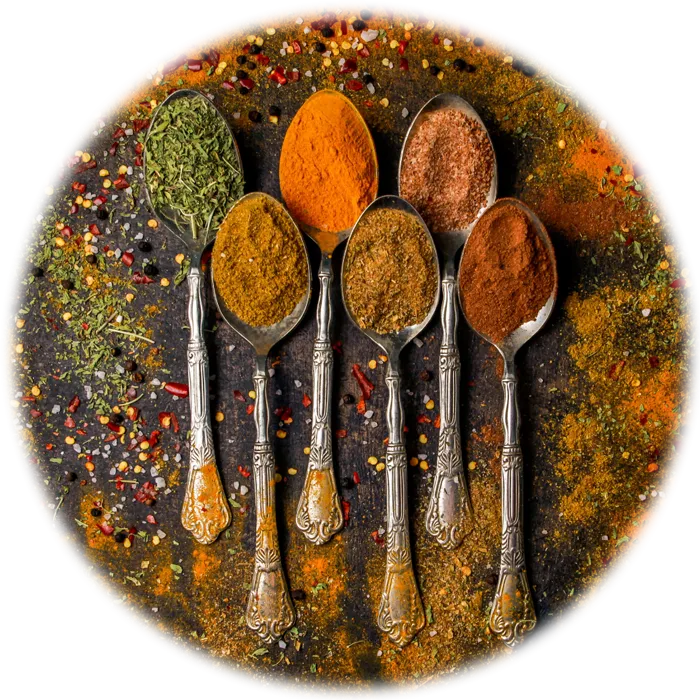
Nutritional properties of Masala
Energy :
230.00 Kcal / 100g
Category : Spices & Sauces
Group : Basic Spices & Condiments
Composition And Nutritional Value :Masala is a general term used in Indian cuisine to refer to a blend of ground spices, which can vary widely depending on the region and dish. Common spices found in masala blends include cumin, coriander, turmeric, garam masala, cardamom, cinnamon, cloves, and chili powder. These spices provide a variety of essential vitamins and minerals, including iron, magnesium, and vitamin C. Masala is also rich in antioxidants due to the combination of spices like turmeric and cinnamon, which help reduce oxidative stress and inflammation. Although used in small quantities, masala contributes flavor and nutritional benefits to dishes.
Health Benefits : Masala blends are rich in spices with health-promoting properties. For example, turmeric, a key component in many masala blends, contains curcumin, known for its anti-inflammatory and antioxidant effects. Cumin and coriander aid digestion, while black pepper can enhance nutrient absorption. Masala spices are also known to have antimicrobial properties, helping to support the immune system. In addition, the antioxidant-rich spices in masala can help protect cells from damage, potentially reducing the risk of chronic conditions such as heart disease, diabetes, and cancer.
Culinary Uses : Masala is used extensively in Indian and South Asian cuisines to flavor a wide variety of dishes, including curries, stews, soups, and rice. It is typically added to dishes early in the cooking process, allowing the spices to release their flavors and create a rich, aromatic base. Masala can be used to season meats, vegetables, legumes, and even rice or breads like naan. There are various types of masalas, such as tikka masala, chaat masala, and curry masala, each with its unique flavor profile. It is also commonly used in marinades for meats and in spice mixes like garam masala.
Types : blends vary greatly depending on the dish or regional cuisine. Popular types of masala include "garam masala" (a warm, aromatic blend), "chana masala" (used for chickpea dishes), "tikka masala" (often used in chicken or meat dishes), and "chaat masala" (used for tangy snacks). The balance of spices, such as the level of heat from chili powder or the sweetness from cinnamon, can change the flavor profile of masala, making it versatile for many different types of dishes. The specific mix of spices often depends on personal or regional preferences.
Shopping And Storage Tips : When purchasing masala, look for a fresh blend with a strong, aromatic scent. Ensure that the spices are finely ground and free from clumping or moisture. Since masala is often made from several ground spices, it is advisable to purchase it from a reputable source to ensure high quality. Store masala in an airtight container, away from light, heat, and humidity, to preserve its flavor and potency. Ground masala blends should be used within a few months of purchase for the best flavor, while whole spices can be stored for a longer period and ground fresh as needed.
Vitamins / 100g ( µg )
Macronutrients / 100g ( µg )
Minerals / 100g ( µg )

